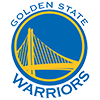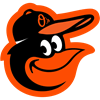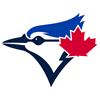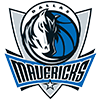As the schedule winds down, it's time to examine what exactly we learned from this truncated season. Here are six lessons to consider:
1. Connor McDavid is in a Class of his Own
We'll start with the most obvious one. Entering Monday's contests, Connor McDavid's 1.78 points per game (min. 40 GP per season) is the highest average in the last 20 seasons, and it's not even close — Nikita Kucherov's 1.56 P/GP in the 2018-19 is a distance second, while Leon Draisaitl's 1.55 last season ranks third. The only times when a player has even averaged more than 1.60 P/GP in that same time frame are Sidney Crosby in 2010-11 (1.61 P/GP) and Mario Lemieux in 2000-01 (1.77 P/GP). In a full 82-games schedule, McDavid would've been on track to score 145 points and win the Art Ross by a 27-point margin over Draisaitl.
We should note that playing in the one-off North Division probably helped McDavid pad his stats, but unlike past years where there were a number of players who could make an argument to be selected first overall in fantasy leagues, McDavid will enter next season as the unanimous, undisputed No. 1 selection. If you're lucky enough to get the first pick, it'll be the easiest decision you could ever make, and saying any name other than "McDavid" — "McJesus" and other such variants are acceptable — deserves a lifetime of ridicule and a stroll down main street where people will line up
As the schedule winds down, it's time to examine what exactly we learned from this truncated season. Here are six lessons to consider:
1. Connor McDavid is in a Class of his Own
We'll start with the most obvious one. Entering Monday's contests, Connor McDavid's 1.78 points per game (min. 40 GP per season) is the highest average in the last 20 seasons, and it's not even close — Nikita Kucherov's 1.56 P/GP in the 2018-19 is a distance second, while Leon Draisaitl's 1.55 last season ranks third. The only times when a player has even averaged more than 1.60 P/GP in that same time frame are Sidney Crosby in 2010-11 (1.61 P/GP) and Mario Lemieux in 2000-01 (1.77 P/GP). In a full 82-games schedule, McDavid would've been on track to score 145 points and win the Art Ross by a 27-point margin over Draisaitl.
We should note that playing in the one-off North Division probably helped McDavid pad his stats, but unlike past years where there were a number of players who could make an argument to be selected first overall in fantasy leagues, McDavid will enter next season as the unanimous, undisputed No. 1 selection. If you're lucky enough to get the first pick, it'll be the easiest decision you could ever make, and saying any name other than "McDavid" — "McJesus" and other such variants are acceptable — deserves a lifetime of ridicule and a stroll down main street where people will line up and chant: "Shame. Shame. Shame."
2. Auston Matthews is Also in a Class of his Own
But only when it comes to scoring goals. While McDavid is the scariest player cutting through the neutral zone with speed, no player is more dangerous than Auston Matthews with the puck in the offensive zone. His ability to change the angle of his shot and release from just about anywhere means he's the rare player where no shot is truly a bad shot. At 0.81 G/GP, Matthews would've been on pace for a 66-goal season in an 82-game schedule. Just to illustrate how rare that feat is relative to McDavid's point production, only two players have managed to score 60 goals in the last two decades: Steven Stamkos in 2011-12 (60 goals) and Alex Ovechkin in 2007-08 (65). Goals are one of the more predictable stats, and for elite shooters like Matthews, the variance from season to season usually isn't very big. Stamkos' effectiveness and production have declined due to injuries, otherwise he's been remarkably consistent, and Ovechkin is arguably the greatest goal scorer this league has ever seen (so far). Once again, playing in the very poor North Division helps pad Matthews' stats, but it's still early stages in his career and he'll have Mitch Marner on his wing for the foreseeable future. Matthews' goal-scoring ability is so rare he has to be the consensus No. 2 pick.
3. Matchups Matter
In a wildly unpredictable season with games getting postponed and re-scheduled frequently, head-to-head leagues took the brunt of the impact. Assuming everything goes back to normal next season, matchups should play less of a role in head-to-head leagues, but, the wrinkle: according to Sportnet's Elliotte Friedman, there's an option for teams to vote for a schedule that allows for six "special" games that would cater to geographic or historic rivals. That means, potentially, more matchups between Canadian teams in different divisions/conferences, and those are the games where players like McDavid and Matthews can pad their stats. If head-to-head leagues have taught us anything this year, it's that planning ahead and maximizing your games played per week is absolutely vital.
Looking ahead to next season, assuming teams are placed back in their original divisions, look for the Maple Leafs to take a step back in the much tougher Atlantic Division and the Oilers to perhaps further improve in a relatively weak Pacific Division. The Central likely will be the toughest, and even the weakest team — the Blackhawks — may see a significant one-year improvement with the continued development of Kirby Dach, Philipp Kurashev, Pius Suter and starter Kevin Lankinen and also the potential return of captain Jonathan Toews. The teams that everyone will try to beat up and thus emphasize in your weekly matchups: Red Wings, Blue Jackets, Ducks, Sharks, Sabres and possibly Devils, Kings and Coyotes. The one thing they all have in common? They're either short on quality depth and/or poor goaltending.
4. Drafting Defensemen High can be Costly
This is subjective and will depend on league settings, but consider that the three defensemen drafted the highest by Yahoo's ADP — Victor Hedman (17.7), John Carlson (22.8) and Roman Josi (32.4) — rank sixth, fourth and 11th in P/GP. That's pretty good considering the inherent randomness of hockey, but the flip side is that there's a big opportunity cost for grabbing defensemen that high in the draft, especially when you consider how many others have the same or better P/GP potential: Cale Makar, Shea Theodore, Adam Fox, Quinn Hughes and even Tyson Barrie, just to name a few.
Grabbing Hedman, Carlson or Josi meant you probably missed out on Brad Marchand (ADP 19.7), Aleksander Barkov (46.3 ADP) and a rotisserie beast in Brady Tkachuk (43.4). Defense can be a rare commodity because there are only 128 top-four defensemen compared to 192 top-six forwards, but the talent pool is deep, scoring is trending up and goaltending is trending down. According to hockey-reference.com, goals per game went from 2.74 G/GP in 2013-2017 following a lockout-shortened season to 2.98 G/GP from 2017-2021. Power plays have also shifted from a traditional three-forward, two-defensemen setup to having four forwards and one point man, and they're more effective than ever with the average power play converting more than 20 percent of their chances. You should be grabbing another marquee forward in the second and third rounds because those players will still tend to outscore a first-pairing defenseman.
5. Goalie Rotations are the New Norm
Goaltending is voodoo, we all know that. Outside of Andrei Vasilevskiy, who is normally stalwart but has even seen his play dip significantly lately, consider the list of the top 10 goalies off the draft board: Connor Hellebuyck (16.4 ADP), Carter Hart (31.0 — ouch), Tuukka Rask (32.8), Robin Lehner (35.5), Jordan Binnington (39.0), Ilya Samsonov (40.4), Carey Price (47.5 — ouch again), Frederik Andersen (49.4) and Igor Shesterkin (57.1). It's safe to say that at least three (Hart, Price and Andersen) won't be drafted in the top 50 again, two were subject to too much hype (Samsonov and Shesterkin) and half of the top-10 goalies (counting W, GAA, SV, SV%) — Alex Nedeljkovic, Mike Smith, Jack Campbell, Chris Driedger and Cam Talbot — were basically afterthoughts, drafted either very late or not at all. It just goes to show that taking a goalie in the early rounds, unless they're elite and playing behind a good team, tends to be a regrettable decision, and that's not factoring potential more timeshares down the road. When it comes to goaltending, lean more toward a draft strategy emphasizing value at draft position rather than going after the big names.
When it comes to next season's draft, don't overlook goalies who may be operating a timeshare to start but could have a much bigger role as the season progresses. That includes Carolina's Alex Nedeljkovic, Florida's Spencer Knight, Dallas' Jake Oettinger, L.A.'s Cal Petersen, Montreal's Jake Allen, Buffalo's Ukko-Pekka Luukkonen and whoever Toronto elects to go with for their goalie tandem as they face an uncertain goaltending situation after this season.
6. Déjà Vu
The COVID situation has affected leagues all over the world, including one of the biggest feeder leagues into pro hockey: the Canadian Hockey League. The cancellation of the entire OHL season and shortened seasons for the WHL and QMJHL meant that junior-aged players had a chance to play in the AHL against men. The last time this happened was in the 2004-05 season when the AHL benefitted from 19- and 20-year-old players on rosters who would've otherwise played in the NHL or elsewhere, and the result was a huge talent boom the following season because the prospects had an extra season to get used to the pro level in the minor leagues rather than making the astronomical leap from junior hockey to the NHL.
Kings sniper Arthur Kaliyev turns 20 in June and will have 30-plus games of AHL experience under his belt for next season, and Capitals center Connor McMichael is in a similar situation. A delayed start in the WHL allowed Dylan Cozens to stick with the Sabres the entire time. Cole Perfetti (Jets) and Quinton Byfield (Kings) were very good for their AHL teams as teenagers and might be ready to step into the NHL right away after performing well in their first taste of pro hockey. Perfetti, in particular, can provide some offensive pop should the Jets lose a key player to the Seattle expansion draft.
Ducks center Trevor Zegras will surely be a focal point of the offense next season, as will the Habs' diminutive but talented goal scorer Cole Caufield. Both got some seasoning in the AHL following their college seasons and it seems to have served them well. Don't forget about these names on draft day; the NHL is a young man's game and the next wave is just coming in.








































